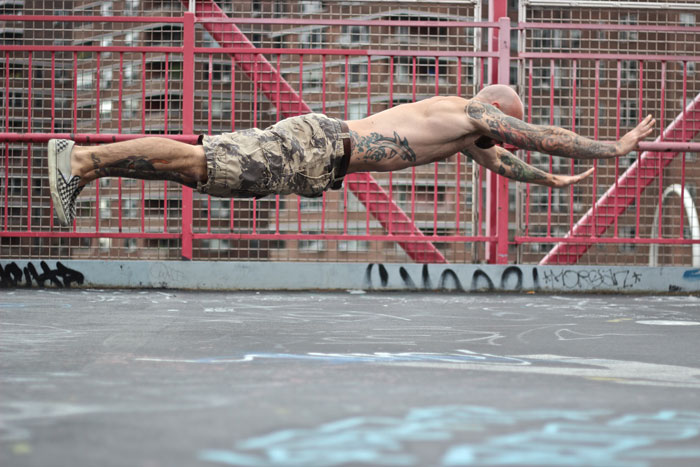
Want to know what it feels like to explode?
No, I’m not referring to those whack pre-workout supplements.
I’m referring to what it feels like to get “in the zone,” which naturally occurs during your superhero-like workouts. These are the moments when you look and feel deceptively stronger to the naked eye. These are the moments that ultimately allow you to push your limits.
Since we’ve all experienced those days where we feel like crap and less motivated to train, it’s time to put a cap on that mental and physical stress once and for all. Here are three steps for a stronger workout and improved recovery rate, EVERY time.
Step I: First Things First – Eliminate Distractions!
- Turn off your computers, mobile devices, and yes, even “high energy” music.
Responding to emails, text messages and social media notifications during the time you’ve set aside for working out is a good way to kill your training progress all together—due to their emotionally distracting capabilities. Playing “high energy” music may also upset the balance you want to achieve between feeling overly excited and feeling too calm.
- Turn away from all timers, stopwatches and clocks.
Reaching the highest level of performance possible during a given workout requires an attentive mind and body. Therefore, it would be silly to try and gauge your performance in the moment right in front of you if you’re too focused on beating the clock. While in a utopian-like society we would make linear progress, the mind and body simply do not work like that. So, in reality, we must respect our body’s dynamic progress capabilities without training on the nerve from elapsed time.
- Ditch the mirrors.
Mirrors create the illusion of space—which can sometimes be helpful in the short run for teaching body awareness. However, in the long run, too much reliance on mirrors can slow down your reaction time, affect your force and power development and interfere with your body’s natural balance and stability. These are the EXACT qualities you need to be mindful of when successfully getting in the zone
Step II: Select Your Secret Weapon – Choose a Movement for the Type of Workout You’re About to Do.
- Choose a Jump Variation for workouts involving more lower body volume AND for total body workouts.
Here’s a video I put together that features some fun options for you to try.
- Choose a plyometric Pushing Variation for workouts involving more upper body pushing volume.
This guy knows what I’m talking about.
- Choose a plyometric Pulling Variation for workouts involving more upper body pulling volume.
Unless you’re proficient with chest to bar pull-ups or kipping muscle ups, stick to the horizontal axis for some explosive Australian pull-ups.
Step III: Get in the Zone – Activate Your Nervous System.
- Regardless of what your current fitness levels are like, when you last worked out or what time limitations you may currently have, it’s imperative that you hit a warm-up that’s specific to the workout you’re about to perform. This is because the way you spend your first 5-10 minutes is the best indicator of how the rest of your workout will go. So we’re all on the same page, a solid warm-up will typically involve any of the following elements.

b) Isometric or Dynamic Core Move (examples: plank or leg raise)
c) Lower Level Big Six Movement from Convict Conditioning for higher reps
d) Lower Intensity Cardio Exercise of your choice (light jog, jumping jacks, wall or some moderately paced mountain climbers with a training partner if you have one (see below))
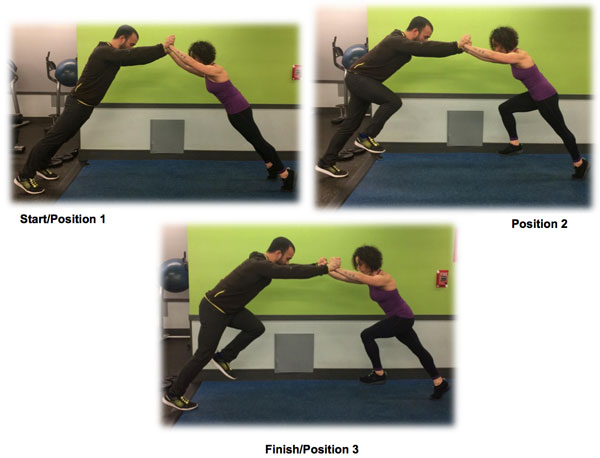
If you have a training partner, some moderately paced mountain climbers for as little as 15 seconds at a time will surely warm-up your core, and get some blood flowing through your entire body. Talk about killing two birds with one stone!
- We’ll now kick up this baseline warm-up a few notches with that plyometric move you selected in Step II above. This is because, the more athletic your warm-up is, the better your chances are of putting yourself into the zone. Perform a superset between that plyometric movement and your warm-up movement(s).
- In order to make the plyometric movement look and feel as graceful and explosive as possible, you’ll perform 3-5 reps ONLY at various points throughout your warm-up. Ideally you’ll want to get away from counting with such few reps as this habit encourages you to train on the nerve. But that’s the approximate range for those of you who need quantitative satisfaction in the beginning.
Not sure where to start?
I recently performed a total body workout that consisted of pike push-ups, hanging V-leg raises, reverse lunges and straight leg bridges for reps. So, to give you an idea of how to apply this info, here’s the specific warm-up sequence/circuit I used prior to that workout.

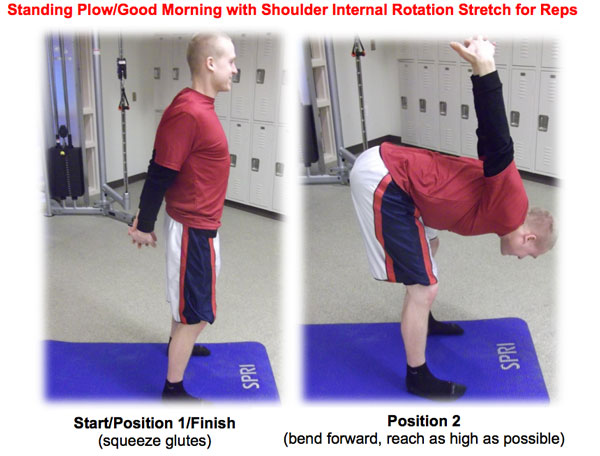
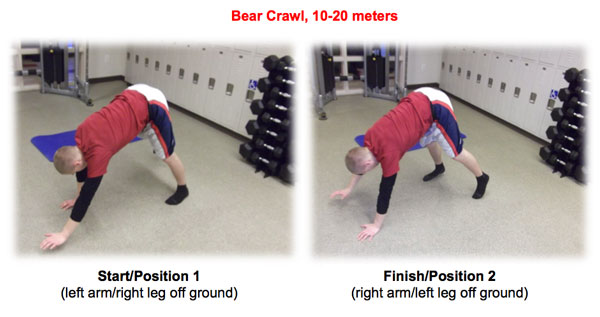

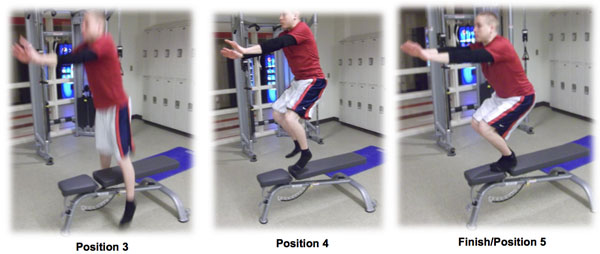
You’ll learn to feel this, but your performance WILL increase with each successive set/rep of your plyometric movement if you’re completely engaged in the moment right in front of you. It should also go without saying that this info can be applied toward workouts with weights for those of you who choose to supplement your calisthenics training.
By the end of your warm-up, you should feel ready to do more—with noticeable improvements in performance—but should NOT at any time feel excessive metabolic fatigue, out of breath or as though you’re doing the Valsalva Maneuver.
In sum, here are some key benefits you’ll experience from getting in the zone for EVERY workout.
- Mood-uplifting, “neural-charge” effect—wherein eustress exceeds distress from an exercise standpoint
- Greater body awareness through free space—remind upper and lower extremities of each other for total body synergy
- More control over body momentum—reinforce a strong carryover between “loading” and “landing” positions (i.e., eccentric and concentric phases in a range-of-motion)
- Make exercise fun, playful and less routine-like.
Do YOU have any favorite strategies that help you get in the zone for your workouts? If so, I’m sure we would love to hear about them. Just drop your tips in the comments below!
For more information about Eric, check out his website, EricBurattyFitness.com.
